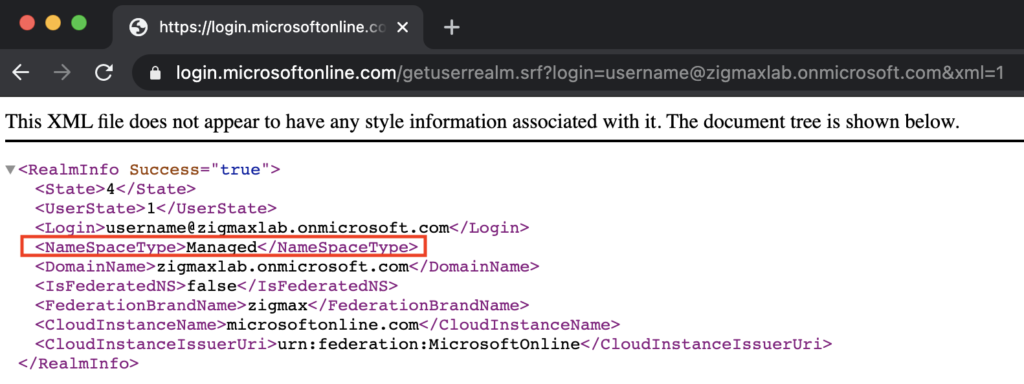Hi,
In this article, I will show you how you can check if an organization uses Azure Activity Directory.
https://login.microsoftonline.com/getuserrealm.srf?login=username@target.onmicrosoft.com&xml=1
In this previous request, you need to replace “target” by the name of the company.
Example with Azure AD enabled:

Example with Azure AD not enabled:

Maxime.
